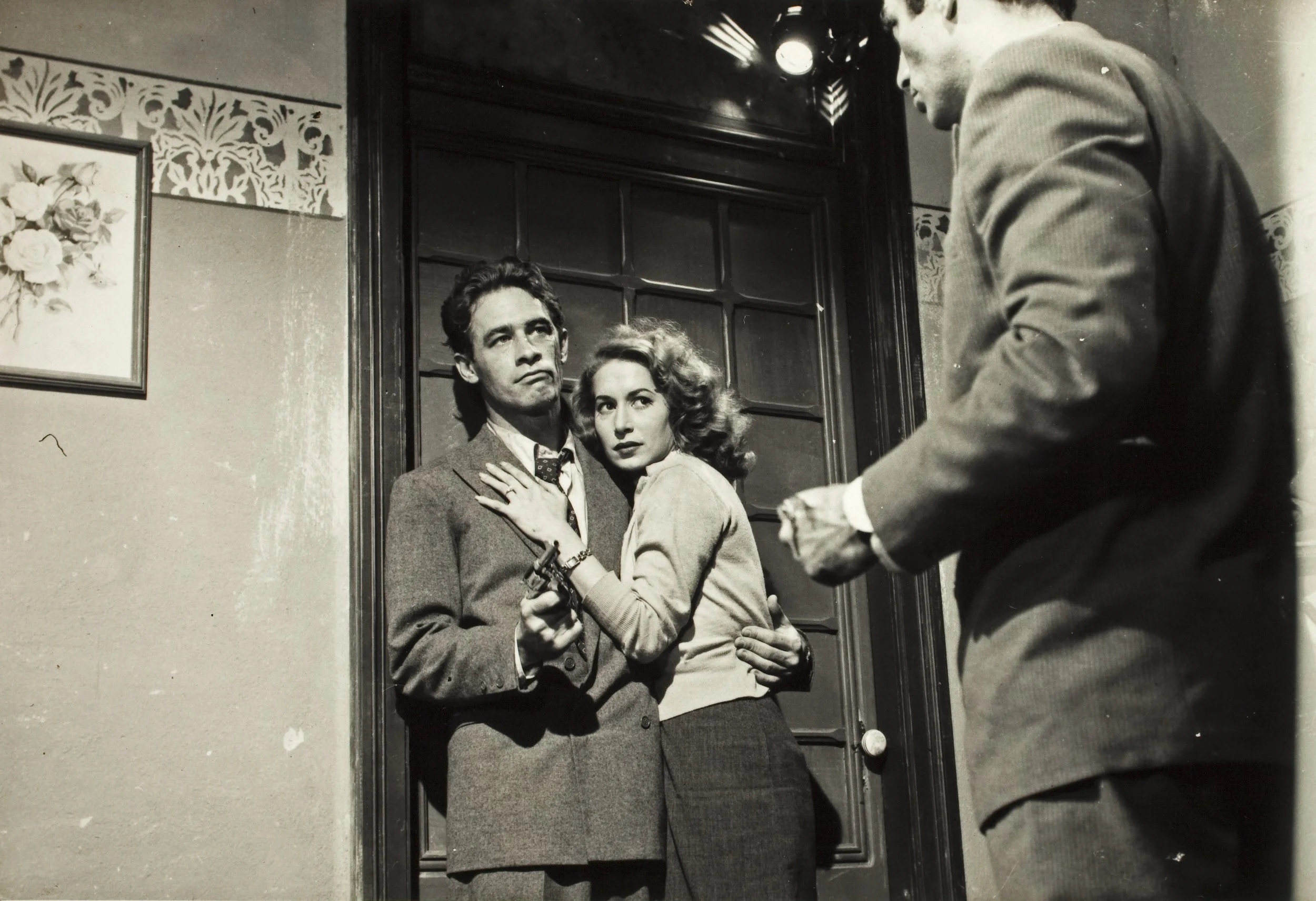
ROAD TO CRIME AT BUDAPEST CLASSIC FILM MARATHONA TASTE OF LATIN AMERICAN NOIR
21 SEPTEMBER 2025 | Budapest
Cinema Mentiré together with Cinemateca Brasileira presents the Brazilian newly digitised noir gem Road to Crime at the
The print to be shown was especially digitised and subtitled for Cinema Mentiré’s season How to Dispose of a Dead body: A Taste of Latin American Noir, done in September 2024 by in London, thanks to the work of Cinemateca Brasileira and Sociedade Amigos da Cinemateca. This will be the first time this extraordinary film will be screened outside Brazil or the UK in decades.
Sunday 21 September 2025, 6.30pm
ROAD TO CRIME
NA SENDA DO CRIME
Dir. Flamínio Bollini Cerri, Brazil, 1954, 71 min.
Sergio works as a mere employee at his rich uncle’s bank, leading a wasteful life in nightclubs and dating the sophisticated starlet Margot. Greedy and unhappy with this situation, he joins a trio of burglars to rob wealthy homes, later becoming the gang’s leader.
The first and only Brazilian noir of the period, Road to Crime was produced by Vera Cruz Cinema Company, an attempt to copy the Hollywood studio system in the burgeoning São Paulo as the upcoming biggest and richest city in South America. The film displays the faster growth of São Paulo at its time on several skyscrapers under construction, including the iconic final scene.
EXPLORING
LATIN AMERICAN NOIR
Originating in Europe in the 1940s and finding its most famous expression in Hollywood, noir cinema’s stylistic and thematic elements also influenced Latin American filmmakers. The gloomy thrillers exploring fatalism in never-ending, rain-soaked nights that emerged globally post-World War II would find the finest resonance in the substantial film universes of Argentina and Mexico. The two powerhouse industries of Latin American cinema at that time deeply engaged with the atmospheric and morally complex world of film noir, having become notable exponents of this genre while infusing it with a very particular, local flavour.
-
In Argentina, directors such as Fernando Ayala, along with pioneers like Carlos Hugo Christensen and Román Viñoly Barreto, made significant contributions to the noir canon. Our pick The Bitter Stems is a prime example of Latin American noir, stepping firmly into the territory of a displaced, disillusioned, and paranoid character. Ayala’s work reflects the broader trends in Argentine cinema of the time, which adeptly adopted and adapted the noir style to explore themes of existential angst and moral ambiguity. A tremendous box office success on release, The Bitter Stems was lost until precisely ten years ago when it was rediscovered hidden away in a private collector’s home outside Buenos Aires.
In Mexico, cine negro flourished under the direction of the likes of Julio Bracho and Roberto Gavaldón, the latter often considered the foremost innovator in this genre not only in Latin America but also worldwide. Through their adaptations of the salsa saloons, scammers and corrupted authorities, Mexican filmmakers of the Golden Age embraced noir narrative and style and made it their own, including legendary national femme fatales. Gavaldón’s The Other One, starring the one and only Dolores del Río, showcases the director’s mastery in crafting psychological thrillers that rival their Hollywood counterparts. Unlike other Gavaldón’s classics recently restored, The Other One remains a seldom-seen gem that we are proud to put in the spotlight.
In Brazil, where an incipient but prolific film industry focused on cost-efficient carnival comedies thrived in Rio in the 1940s, the prosperous wannabe metropolis of São Paulo strived to create more artistic and socially relevant films. Among dramas, westerns and historical sagas produced within this context, Road to Crime stands out as the one-of-a-kind noir entry into Brazilian cinema, which makes this notable work even more special with its tale of inferiority complex, pettiness and ambition that leads to criminality and consequent decay. This was the first film by Flamínio Bollini, an incredibly young theatre director from Italy, who was joined by fellow countryman screenwriter Fábio Carpi (a future Dino Risi collaborator) and the accomplished British cinematographer Chick Fowle in this Brazilian cinema landmark. In 2010, the Cinemateca Brasileira and the São Paulo Film Festival restored the 35mm copy of Road to Crime. Still, this material has not yet been digitised, subtitled or travelled to other pastures – until now.






